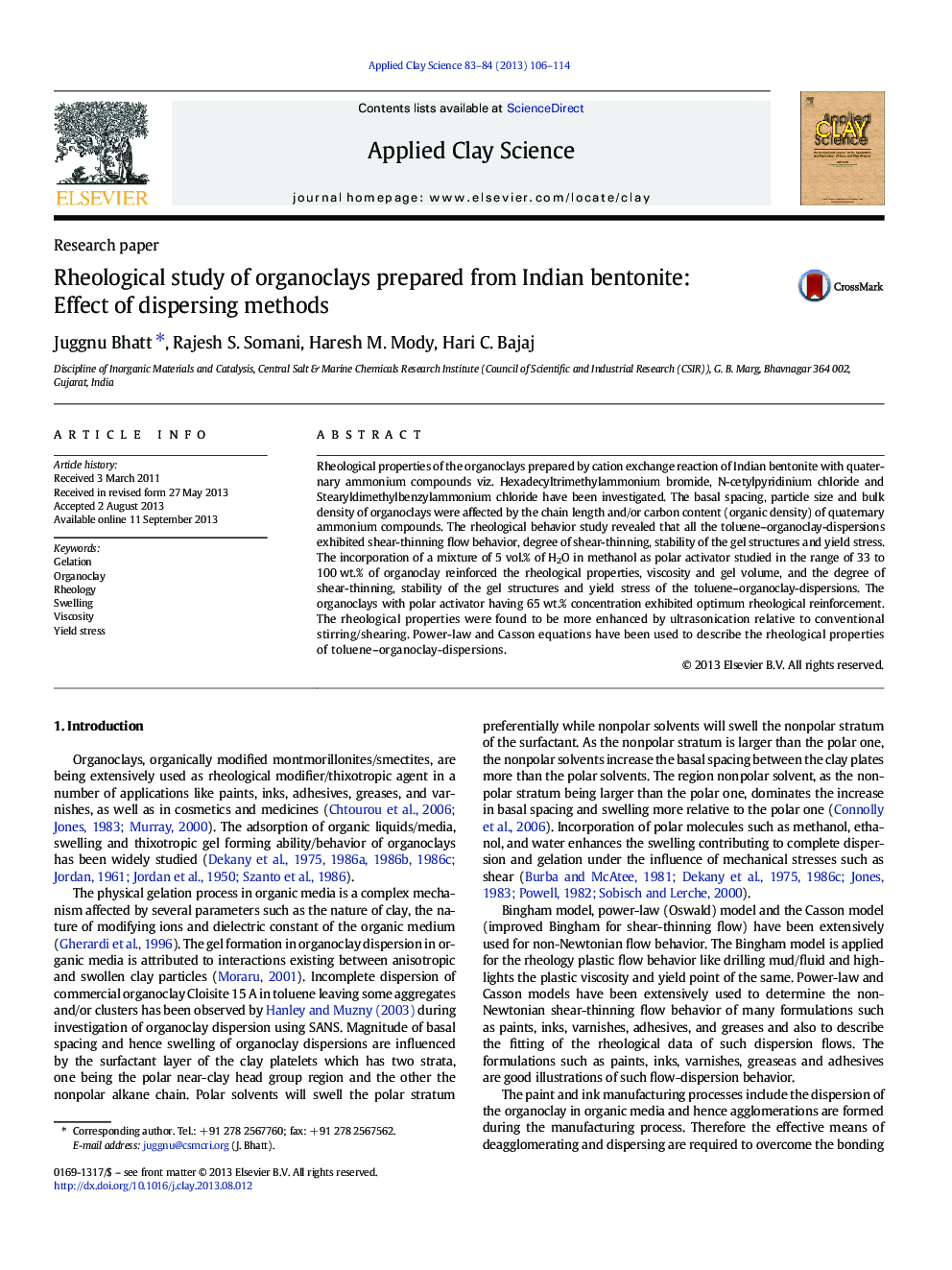| کد مقاله | کد نشریه | سال انتشار | مقاله انگلیسی | نسخه تمام متن |
|---|---|---|---|---|
| 1694872 | 1519090 | 2013 | 9 صفحه PDF | دانلود رایگان |

• Effect of organic density of modifier on organoclay dispersions studied.
• Investigated the effect of shearing and ultrasonication, on organoclay dispersions.
• Ultrasonic cavitation enhanced rheology of dispersions more profoundly than shearing.
Rheological properties of the organoclays prepared by cation exchange reaction of Indian bentonite with quaternary ammonium compounds viz. Hexadecyltrimethylammonium bromide, N-cetylpyridinium chloride and Stearyldimethylbenzylammonium chloride have been investigated. The basal spacing, particle size and bulk density of organoclays were affected by the chain length and/or carbon content (organic density) of quaternary ammonium compounds. The rheological behavior study revealed that all the toluene–organoclay-dispersions exhibited shear-thinning flow behavior, degree of shear-thinning, stability of the gel structures and yield stress. The incorporation of a mixture of 5 vol.% of H2O in methanol as polar activator studied in the range of 33 to 100 wt.% of organoclay reinforced the rheological properties, viscosity and gel volume, and the degree of shear-thinning, stability of the gel structures and yield stress of the toluene–organoclay-dispersions. The organoclays with polar activator having 65 wt.% concentration exhibited optimum rheological reinforcement. The rheological properties were found to be more enhanced by ultrasonication relative to conventional stirring/shearing. Power-law and Casson equations have been used to describe the rheological properties of toluene–organoclay-dispersions.
Figure optionsDownload as PowerPoint slide
Journal: Applied Clay Science - Volumes 83–84, October 2013, Pages 106–114